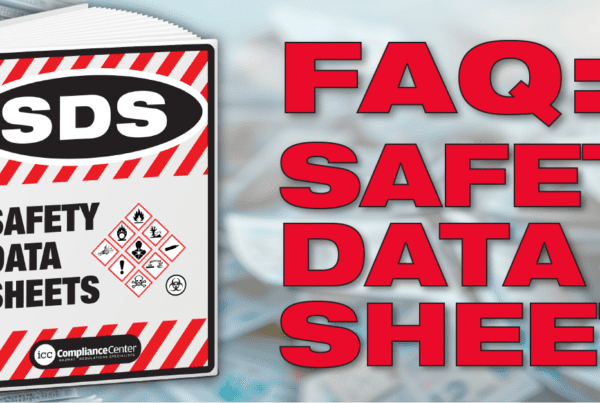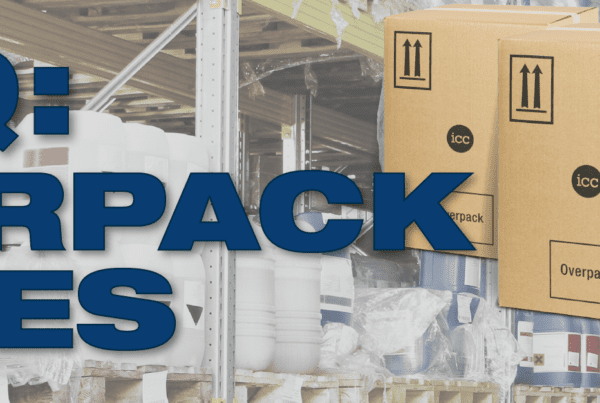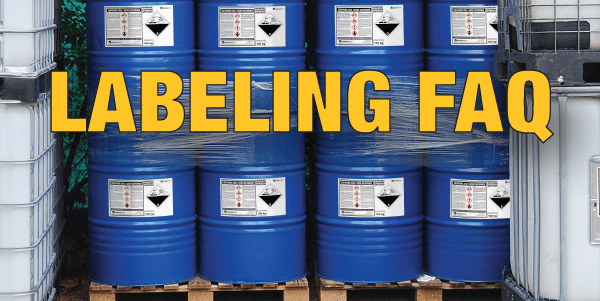Frequently asked questions about Lithium Batteries.
Why are lithium batteries regulated as dangerous goods?
Although they have become essential for many modern devices, lithium batteries have a number of hazards that make them dangerous in transportation. When damaged, or if improperly manufactured, they can form “internal short circuits” that lead to heat buildup that can result in fires. They can also ignite if overcharged, or when operating equipment and not enough cooling is provided. Lithium metal in non-rechargeable batteries can ignite on contact with water, so cracked casings can be dangerous when batteries are exposed to the elements. Making matters worse, extinguishing lithium battery fires can be difficult and require special extinguishers (Class D). Finally, swallowing a lithium battery (although a rare situation) can lead to potentially fatal damage to the esophagus and digestive tract.
What is the difference between a "battery" and a "cell"?
Although people tend to use these terms interchangeably, they have specific meaning in dangerous goods regulations. A cell refers to a single anode and cathode separated by electrolyte used to produce a voltage and current. For example, think of a single “AA” cell that is not connected to another cell. When two or more cells are connected together to share their output, this is called a “battery.” For example, a typical computer battery pack contains several cells connected together.
What is the difference between "lithium ion batteries" and "lithium metal batteries"?
Lithium metal batteries, as their name implies, use an actual strip or piece of lithium metal as the anode (negative electrode). Originally, these batteries were non-rechargeable (sometimes called “primary” batteries), although rechargeable lithium metal batteries now exist. Lithium ion batteries don’t have metallic lithium. Instead, they have lithium ions in the electrolyte. They are usually rechargeable (sometimes called “secondary” batteries). Some lithium ion batteries use a polymeric electrolyte, but are classed as lithium ion batteries for transportation.
What divides "high powered" lithium batteries from "low powered" lithium batteries?
The United Nations Recommendations on the Transport of Dangerous Goods has created a system that divides lithium batteries into “high powered” ones (which must be transported as fully regulated dangerous goods) and “low powered” lithium batteries, which are exempted from many of the requirements of the regulations. Most regulations, such as the US Hazardous Materials Regulations of 49 CFR and Canada’s Transportation of Dangerous Goods Regulations, have adopted the criteria from the UN Recommendations. Lithium metal CELLS will be considered low-powered if they contain not more than 1 gram of lithium each. Lithium metal BATTERIES are low-powered if they contain not more than 2 grams of lithium per total unit. Now, lithium ion batteries do not contain lithium metal, so they must be classified using their power rating in Watt-hours (Wh). Lithium ion CELLS will be considered low-powered if they are rated not more than 20 Wh each. Lithium ion BATTERIES are low-powered if they are rated not more than 100 Wh per total unit.
How can I find out my battery's lithium content or power rating?
For lithium metal batteries the best solution is to get the information from the manufacturer, such as a specification sheet, Safety Data Sheet or other communication. If it’s not easily available, but you know the Ampere hours of the cell or battery, the lithium content can be calculated by the formula Lithium content (grams) = Ah per cell x 0.3 gram x number of cells. Lithium ion batteries may give you more of a clue on the battery itself. On recently-manufactured batteries, the Watt-hour rating must be marked on the outer casing. If you cannot find it, look for the voltage and ampere hour rating. The Watt-hour rating can be calculated as Watt-hours = voltage (V) x ampere hour (Ah). Again, this information may usually be found in specification sheets or SDSs.
When do I need UN specification packaging for lithium batteries?
To be able to accurately tell if you need UN specification packaging, you should be clear which regulation you’re using. In general, though, UN specification packaging is required for high-powered lithium batteries that are shipped as spares, or packed with (but not installed) in equipment. Low-powered lithium batteries, or equipment with batteries installed, will usually not require UN specification packaging.
What type of UN Outer Packaging is required for high-powered lithium batteries that are shipped as spares, or packed with (but not installed) in equipment?
The following outer packaging is authorized with at least a PG II level: Metal, wooden, fiberboard (4G), solid plastic boxes, plywood, fiber (1G), or plastic drums.
What type of inner packaging is required when shipping lithium batteries that require UN Specification Packaging?
Non-metallic inner packaging that completely encloses the cells or batteries, and separates the cells or batteries from contact with equipment, other devices, or electrically conductive materials. Inner packaging may include plastic bags and/or inserts.
What are some of the special rules for shipping lithium batteries in the United States?
The US has some special domestic rules for shipping lithium batteries. For example, except when lithium cells or batteries are packed with or contained in equipment in quantities not exceeding 5 kg net weight, the outer package that contains lithium cells or batteries must be appropriately marked: “PRIMARY LITHIUM BATTERIES-FORBIDDEN FOR TRANSPORT ABOARD PASSENGER AIRCRAFT”, “LITHIUM METAL BATTERIES-FORBIDDEN FOR TRANSPORT ABOARD PASSENGER AIRCRAFT”, “LITHIUM ION BATTERIES-FORBIDDEN FOR TRANSPORT ABOARD PASSENGER AIRCRAFT.” Alternately, the packages may be labeled with a “CARGO AIRCRAFT ONLY” label. The US regulations also have reduced requirements for lithium batteries up to 5 g/cell or 25 g per battery (lithium metal) or 60 Wh/cell or 300 Wh/battery (lithium ion). These are only allowed to be transported as exempted by ground, so must be marked “LITHIUM BATTERIES-FORBIDDEN FOR TRANSPORT ABOARD AIRCRAFT AND VESSEL.”
What telephone number do I need to provide on the Lithium Battery Handling Mark?
The UN Recommendations on the Transport of Dangerous Goods established that there was too much confusion regarding the phone number, which did not enhance safety, so the requirement was removed. The 49 CFR, IATA, and IMDG have also amended their regulations so that a phone number is no longer required. Note that a transition period in place allows you to continue adding a phone number if you wish.
The Transportation of Dangerous Goods Regulations in Canada have not yet been amended to reflect this change.
What are the required dimensions of the Lithium Battery Handling Mark?
The UN Recommendations on the Transport of Dangerous Goods have recently allowed for a reduction in the size of this mark to a minimum of 100 mm per side (from 110 by 120 mm). IATA, IMDG, and now the 49 CFR by way of HM-215Q also incorporated this change. The TDG regulations in Canada is the only regulations that is still pending.
Does the Lithium Battery Handling Mark have to have red borders?
Yes. A completely black and white design will not be acceptable.





